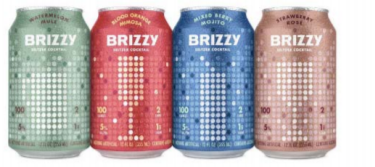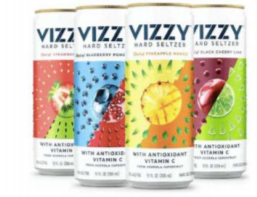Do Alcoholic Beverages named BRIZZY and VIZZY make you DIZZY?
Would you be likely to be confused as to the sources of hard seltzers named BRIZZY and VIZZY, at least before you get a buzz on?


THE CASE
Hard seltzers have soared in popularity in the United States. The two best-selling brands, WHITE CLAW and TRULY, sold over 64 million cases in 2019!
Joining that growing trend, Future Proof Brands, L.L.C. (“Future Proof”) adopted and registered the mark BRIZZY for its “seltzer cocktail.” Thereafter, its competitor, Molson Coors Beverage Company (“Coors”), chose VIZZY as its brand for “hard seltzer.”
Future Proof sued Coors for trademark infringement in the United States District Court for the Western District of Texas and moved to have Coors preliminarily enjoined from selling products under the mark VIZZY or any other mark confusingly similar to BRIZZY. The district court declined to issue the preliminary injunction because Future Proof did not demonstrate “a substantial likelihood of success on the merits.”
Future Proof appealed to the United States Court of Appeals for the Fifth Circuit, which held that the district court had not abused its discretion and affirmed the denial of a preliminary injunction.
THE ANALYSIS
The Fifth Circuit applies eight so-called “digits of confusion” to determine whether a likelihood of confusion exists. It was uncontested that three of these digits supported the granting of an injunction:
- The similarity of the products
- The identity of the retail outlets and purchasers
- The identity of the advertising media used
But Future Proof contended that the district court erred in evaluating the five other digits:
- The nature (strength) of the mark allegedly infringed. Although the district court had characterized the mark BRIZZY as descriptive and therefore weak in source significance, the Fifth Circuit disagreed, finding that the mark does not convey an immediate idea about the characteristics of hard seltzers. Instead, the Fifth Circuit characterized BRIZZY as suggestive of the product’s carbonation because it rhymes with “fizzy.” Suggestive marks, like descriptive marks, can be weak, and in this case, several third-party brands shared the common “IZZY” root. Accordingly, the Fifth Circuit held that it was not clear error for the district court to have found that this digit did not support an injunction. (The presumption of validity carried by the BRIZZY registration was no help to Future Proof because the validity of a mark is irrelevant to its strength for infringement purposes).
- The similarity of the two marks. The district court had correctly considered the differences in the packaging of the respective products as reducing a likelihood of confusion in the marketplace. Although the district court had not considered the aural similarities of “B” and “V,” there was no evidence that consumers often purchase alcoholic drinks by verbal request in bars and restaurants or that Future Proof’s seltzers were even sold in bars and restaurants. Therefore, the Fifth Circuit found that the district court had not erred in finding that this digit only marginally supported the granting of an injunction.
- The defendant’s intent. Even if Coors had adopted its mark while being aware of Future Proof’s mark, mere awareness does not establish bad intent. The Fifth Circuit’s prior decisions had been inconsistent as to whether the absence of bad intent is neutral or weighs against finding a likelihood of confusion. Without resolving that inconsistency, the Fifth Circuit found that the district court had correctly concluded that this digit did not support an injunction.
- Evidence of actual confusion. The district court had concluded that one instance of actual confusion by a wholesaler had not involved a consumer and merely was a fleeting mix-up of names. The Fifth Circuit said that the wholesaler should have been counted as a consumer, but nevertheless found that this fleeting mix-up of names failed to show confusion and did not support an injunction.
- The degree of care exercised by potential purchasers. The BRIZZY product’s low price of $14.99 for a six-pack was not sufficient, in the absence of affidavits, testimony, or other evidence, to establish that consumers make snap decisions based on price. The Fifth Circuit found that this digit did not support an injunction.
THE CONCLUSION
Saying that each digit may be weighed differently from case to case, the Fifth Circuit held that the district court had not committed clear error in denying the preliminary injunction. Therefore, BRIZZY and VIZZY may continue to compete in the marketplace.
However, this situation may change if this case continues to trial and Future Proof introduces additional evidence to support its claim that there is a likelihood of confusion.
Future Proof Brands, L.L.C. v. Molson Coors Beverage Company, No. 20-50323 (5th Cir. December 3, 2020).
Author’s Note: This case reminds me of the old nursery rhyme ending, “Fuzzy Wuzzy wasn’t fuzzy, was he?”.
For further information, contact William M. Borchard or your CLL attorney.